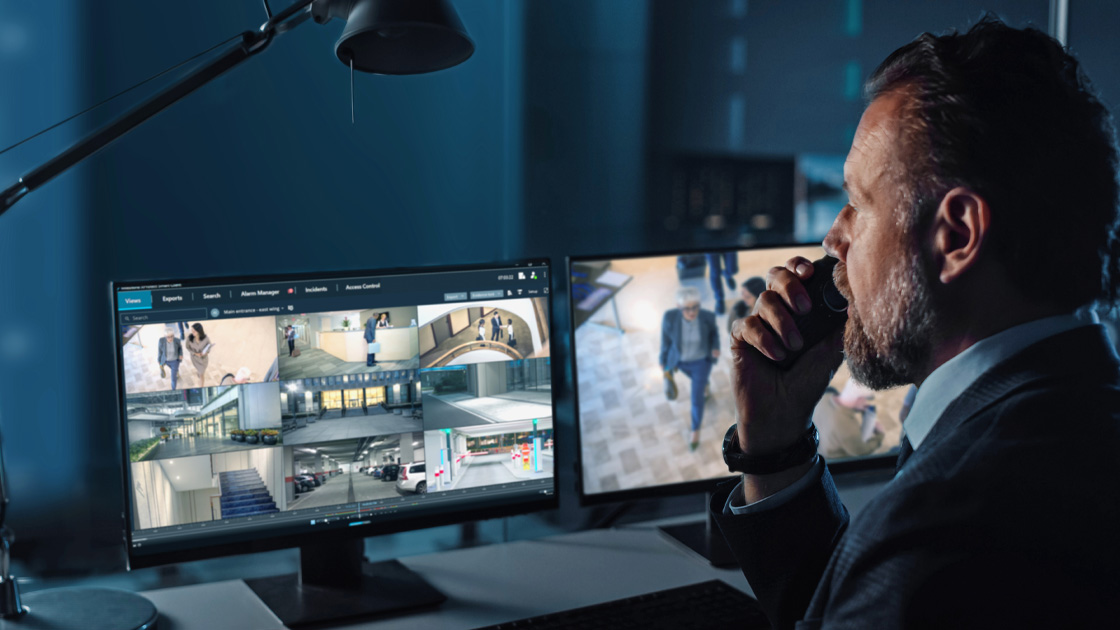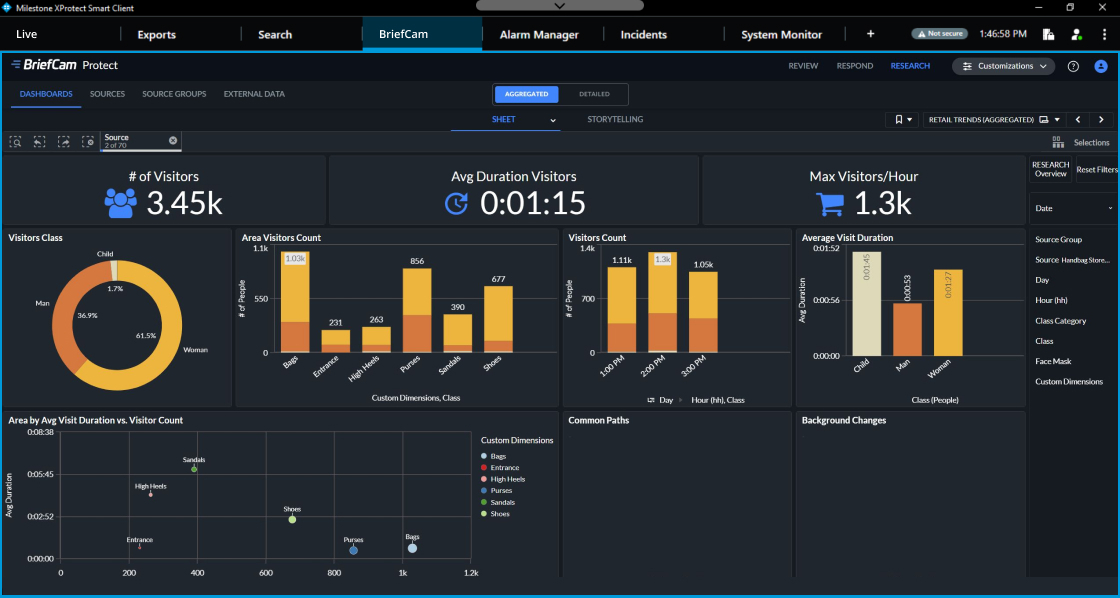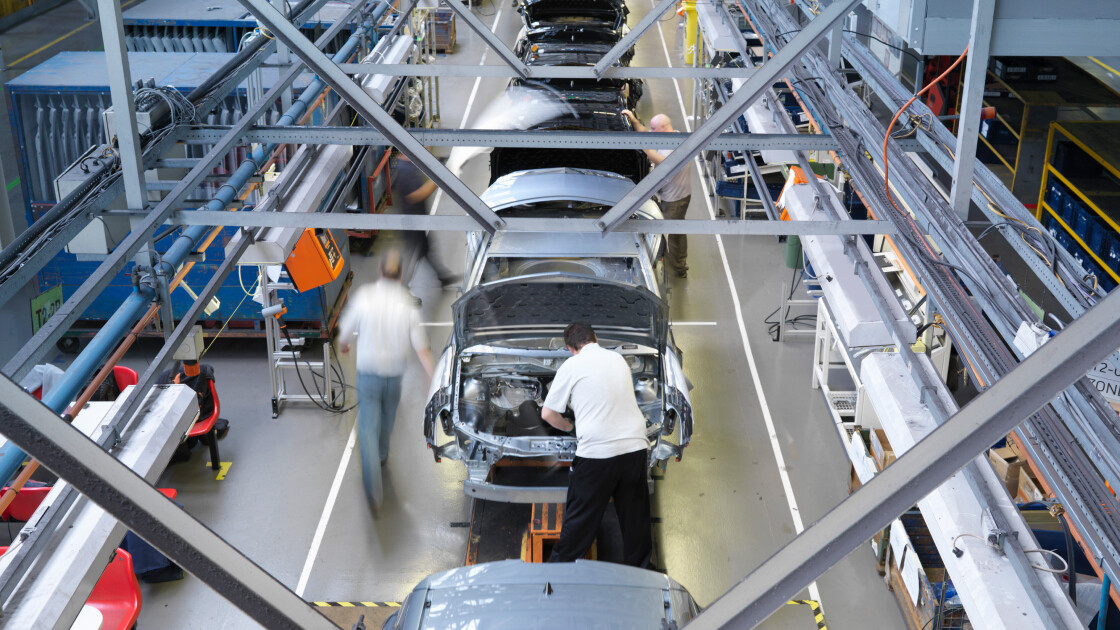This article is for anyone looking to use automatic license plate recognition—also known as “ALPR” or “LPR”—together with Milestone’s XProtect® video management software. We’ll talk about common use cases for LPR and explain what’s possible with Milestone’s own extension versus alternative LPR integrations.
License plate recognition relies on optical character recognition (OCR) to read vehicle registration plates from images captured with security cameras. LPR is one of the most popular analytics within video surveillance, as its applications span across both the public and private sectors.
- Traffic management: LPR helps monitor vehicle flow, detect traffic violations and manage congestion by automating processes like toll collection. It can also help prioritize emergency vehicles for faster response times.
- Law enforcement: Police departments around the world use LPR to identify stolen vehicles, track suspects and flag vehicles with outstanding violations. It allows real-time monitoring and historical tracking of vehicle movements, which can help investigators find key pieces of evidence within criminal cases.
- Parking management/access control: Most of us are used to driving in and out of paid parking lots without using ticket machines, and that’s thanks to the widespread adoption of LPR. By capturing and identifying license plates, LPR systems can automatically grant or deny access based on pre-configured permissions. This has become an essential part of keeping schools, residences, offices, manufacturing sites and other types of critical infrastructure safe.
If you’d like to learn more about how Milestone customers use license plate recognition together with our video management software, please check out these stories:
- Residential: In Uruguay, a virtual doorman company uses video management and license plate recognition to remotely grant access to visitors and automatically open parking barriers for residents' vehicles.
- Retail: An Australian tech company helps fast food chains speed up customer service by linking repeat customers' orders to their license plates.
- Manufacturing: An Italian packaging company integrates license plate recognition into their video management system to control vehicle access while also monitoring production line repairs.
- Law enforcement: The Royal Bahamas Police Force uses license plate recognition to track vehicles in hit-and-run cases, improving safety across the city.
- Traffic management: In addition to working with local police to resolve traffic cases, the City of Hobart monitors traffic patterns and parking lot occupancy.
With our very own LPR extension, you can:
- Monitor and track video footage based on license plate numbers, aliases or country types
- Create access control rules based on license plate match lists
- Investigate incidents involving vehicles and export findings
- Our LPR extension works with all paid variants of XProtect. It also works with all cameras supported by XProtect and provides multi-lane detection with a single camera. For any camera to work well though, you’ll need to go through some calibration steps.
- Server requirements will depend on 1) the scale of your LPR needs and 2) server components (e.g., CPU and RAM). The extension is fully compatible with Milestone Husky IVO servers. It also works on other servers that meet the LPR spec requirements. If you only have one or two LPR cameras for your office building, you could likely have those running alongside your core VMS on the same server. For larger projects however, it’s necessary to have a dedicated LPR server. Some testing indicates that the best quality server can handle up to 80-100 LPR cameras, but your mileage may vary.
- In the Management Client, LPR will be listed under Basics → License Information. It will also be visible under Servers → LPR servers, where you can see a list of your LPR cameras, match lists and license plate style aliases:
- In the Smart Client, the LPR tab will show you a list of all cameras running the extension:
- Match lists are predefined lists of vehicle license plates that the LPR system is programmed to recognize and act upon in a specific way. You can create rules in XProtect that trigger certain actions for when a plate number does or does not exist on any of your lists. For example, you can trigger your access control system to open a gate when a plate number is on a match list of employee vehicles, emergency vehicles or trusted vendor vehicles. You can also set up alarms for when a plate number is not on any of your match lists.
- Country modules help you know whether a license plate is from a specific country or region. If an LPR deployment is in a region where vehicles from multiple countries frequently pass (e.g., in border areas), multiple country modules can be used simultaneously. This allows the system to recognize and interpret license plates from a wide range of countries accurately. Milestone’s LPR extension supports all countries on this list.
- Style aliases let you group different license plate variations under a common name. There are certain vehicles that are allowed to follow different traffic rules (e.g., emergency vehicles, law enforcement vehicles, diplomatic vehicles). In theory, you could group all of these into one alias called “No speeding tickets”. Aliases are useful for managing access to buildings and parking lots while ensuring that emergency response vehicles can move freely within public and private spaces.
There are two ways:
- In the LPR tab, there is a search field where you can type a number to get a list of events associated with the given plate number. You can see the search field highlighted in the previous image.
- If you’re looking for video evidence that will provide contextual, meaningful information, we recommend using the Search tab. You can select the specific camera or camera group that you’re interested in, select the “vehicles” feature and then choose your filters. You can type out the specific plate number or, if you have limited information such as “it was a Canadian plate”, you can filter by the relevant country module:
Besides finding video evidence connected to a specific vehicle, operators can also proactively monitor traffic with a customized camera overview in the Live tab of the Smart Client. This can be particularly useful for facility managers who want to keep an eye on vehicle entry points across their sites. The image at the top of this article shows an example of the Live tab view.
There are three licenses needed for LPR:
- The base license: covers an unrestricted number of LPR servers
- The LPR camera license: per camera used in your XProtect LPR project
- The LPR country module license: for each country, state or region (five modules are included in the base license)
When you place an order, LPR licenses will be added to your XProtect base license. If you’re already an XProtect customer, you’ll get a new software license code (SLC) that includes LPR.
Alternative LPR solutions allow operators to do essentially the same tasks mentioned in the previous section. That said, we sometimes get requests for additional features that are not currently available with Milestone’s own LPR extension:
- Wildcards, which can match a plate number to a list even when some characters are obscured or missing
- Live updates of match lists for approved versus banned plate numbers
- Data on vehicle make (e.g., Toyota, Honda, BMW) and model (e.g., Corolla, Accord, M5)
If you already have a system and want to check if it’s compatible with XProtect, or if you want to see the list of supported integration, you can check our list of technology partner solutions. One solution that encompasses all three features is BriefCam.
Each integration will have its own technical requirements, so be sure to check out the vendor page for specifications. If you have questions, you can always reach out to the vendor or send us a message.
One solution that encompasses all three features is BriefCam. Here’s an example of what the XProtect interface looks like when integrated with their LPR technology:
This article highlights two key reasons why customers choose Milestone, and they both have to do with flexibility:
- With XProtect’s open-platform software, you have the freedom to choose your preferred LPR system; whether that’s Milestone’s own extension or an alternative.
- XProtect supports more security devices than any other video management software, meaning that you’ll be able to make the most of the cameras, sensors and other equipment that you already have.
Beyond these product benefits, customers trust Milestone because we’ve been in the business for over 25 years and have a global network of resellers and system integrators who can offer support.
If you’d like to see XProtect + LPR in action, please book a one-on-one demo!


